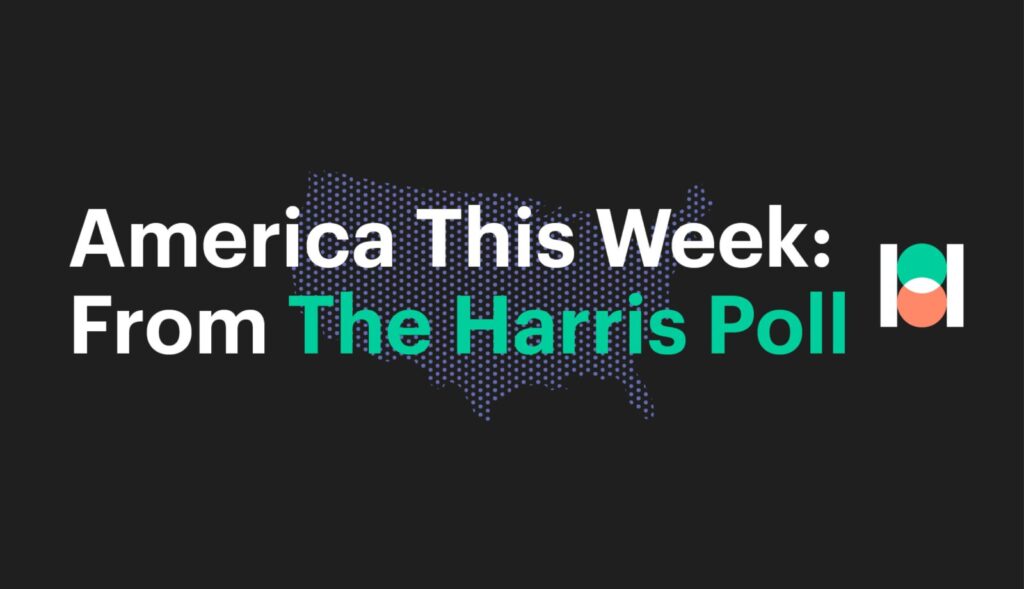Brief • 3 min Read

With a new round of stimulus checks passed this month, Americans may be spending more this spring. Will this increase in cash bring a revival of the Roaring 20s? Looking to the past year may help answer this question. A recent study by The Harris Poll on behalf of Yahoo Finance finds that about 15% of Americans who received the last two stimulus checks invested part or all of the money from those checks, and about half of this group invested specifically in cryptocurrencies like Bitcoin and Ethereum.
Currently, most Americans report that compared to before the pandemic, their household finances remain unchanged (52%). In fact, one in five are reporting improvements in their household finances.
Nevertheless, more than a quarter (29%) of Americans still report that their household finances have worsened because of the pandemic, and this may play a role in how people have decided to use their stimulus checks over the last year.
Of those who received the first federal stimulus payment issued in March 2020, most spent the money on necessities like rent or groceries (43%), put the money in savings (36%), or paid down debt (32%). A total of 15% invested part or all of their extra funds, with 7% investing specifically in cryptocurrency.
This trend held for the second round of stimulus checks, too. Again, Americans used to the money to pay for necessities (43%), put money in their savings (33%), or pay down debt (30%). Cryptocurrency investments also held steady at 7% while non-crypto investments (e.g., stocks, bonds, commodities) rose slightly to 10%.
Two-thirds (67%) of Americans say they expect to receive a stimulus payment from the pandemic relief bill that Congress just passed this month, and 62% say they feel they need the money to be able to cover the cost of necessities like household bills, groceries, and medicine.
It’s clear, though, that right now, getting back to spending is not the sole focus for Americans. Although most of those who expect to receive the next stimulus payment do see themselves in need, a large plurality plan to put at least some of the money into their savings (40%) or invest the funds (17%). Of those who plan to invest money from the new stimulus check, 53% plan to invest in cryptocurrencies.
With stimulus check investment in cryptocurrencies remaining so stable throughout the pandemic, with general investments increasing overall, and with more Americans putting stimulus money into their savings, it appears Americans are looking for safe havens for their extra cash and experimenting with increasing their holdings if possible.
This is especially true of those in higher income households who may have more wiggle room. Compared to just 3% of individuals in households making less than $50,000/year, 10% of individuals in households making more than $100,000/year invested in cryptocurrencies using the first stimulus check. Slightly more (13%) did the same with the second stimulus check, and 14% plan to do the same, assuming they receive the next stimulus check. Throughout the pandemic, those in high annual income households ($100K+) have also increased their overall investing with stimulus checks compared to their lower income counterparts (<$50K) (24% vs. 5%, respectively for the March 2020 stimulus; 28% vs. 6%, respectively for the January 2021 stimulus; and 31% vs. 13%, respectively for the upcoming stimulus).
Moreover, Americans who receive stimulus checks aren’t only focused on providing for themselves. Throughout the pandemic around one in ten recipients have used their stimulus payments to offer financial help to friends or family (9%), and 12% plan to do the same using the new stimulus check. In fact, nearly one in five individuals in higher annual income households ($100K+) have done this throughout the pandemic — 16% using the March 2020 stimulus and 15% using the January 2021 stimulus — and plan to do so at a higher rate assuming they receive the next stimulus check (19%).
One ray of hope for those looking to see discretionary spending rise: Americans show a small uptick in the willingness to spend some or all of their stimulus checks on non-essentials, such as entertainment and electronics. Although 10% of Americans who received the first stimulus check spent some or all of the money on non-necessities, 13% did the same with the second stimulus check. Today, 16% of those who expect to receive a stimulus payment from the most recent pandemic relief bill plan to spend part or all of the money on non-essentials, signaling that — in addition to experimental investing — spending for pleasure is on the rise.
Editor’s Note: An earlier version of this post incorrectly stated that of those who plan to invest money from the new stimulus check, 41% plan to invest in cryptocurrencies. This number has been corrected to 53%.
Methodology
This survey was conducted online within the United States by The Harris Poll on behalf of Yahoo Finance during March 12-15, 2021, among 1,052 U.S. adults ages 18 and older. This online survey is not based on a probability sample and therefore no estimate of theoretical sampling error can be calculated. Figures for age, sex, race/ethnicity, education, region and household income were weighted where necessary to bring them into line with their actual proportions in the population. Propensity score weighting was used to adjust for respondents’ propensity to be online.
Claims about which stocks or cryptocurrencies individuals purchased have not been verified by an independent brokerage firm, securities exchange, other financial institution, or trading records. For more information on methodology, please contact Dami Rosanwo.
Subscribe for more Insights
Subscribe to our newsletter for the latest trends in business, politics, culture, and more.
Download the Data
Get the full data tabs for this survey conducted online within the United States by The Harris Poll on behalf of Yahoo Finance between March 12-15, 2021, among 1,052 U.S. adults ages 18 and older.
Download
Subscribe for more Insights
Subscribe to our newsletter for the latest trends in business, politics, culture, and more.
Download the Data
Get the full data tabs for this survey conducted online within the United States by The Harris Poll on behalf of Yahoo Finance between March 12-15, 2021, among 1,052 U.S. adults ages 18 and older.
DownloadRelated Content








